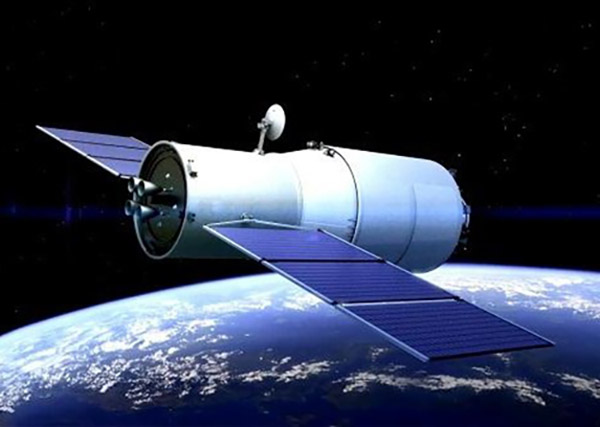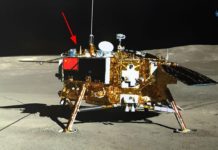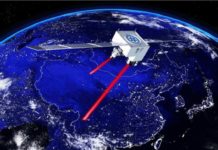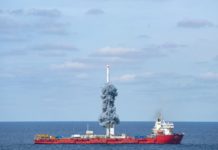On 20 April 2017, China’s first cargo spacecraft Tianzhou-1 was launched and made its way to China’s spacelab, Tiangong-2. Two days later, on 22 April, at about 4.00 UTC, Tianzhou-1 docked with Tiangong-2 in a quick, no-fuss execution that was completed by 4.23 UTC.
Once docked, Tianzhou-1 will have several missions during its 5-month mission duration. The first is to complete 3 test dockings. The second will be the automated refueling of Tiangong-2, a process which only the Russians have completed thus far. The third is to conduct experiments aboard the spacecraft. And lastly, Tianzhou-1 will separate from Tiangong-2 and will operate as an independent satellite for about 2 months till the end of the mission.
The launch of Tianzhou-1 was celebrated with much fanfare, and is considered an important milestone in the Chinese space programme, both in terms of engineering and in determining the future of Chinese space goals.
An Achievement in Orbital Mechanics
Besides the ability to delivery cargo, for which dummy supplies were included in the spacecraft, Tianzhou-1 represents an achievement in terms of China’s engineering capabilities. The automated docking procedures, which were done quickly and accurately, proved that China could independently complete a difficult task.
Automated docking is not a simple feat. According to James Rice, Senior Scientist at the Planetary Science Institute, who spoke to CGNT, automated docking is far more complicated that manual docking of a manned spacecraft.
He said, “This mission is different because other missions had astronauts on board who do the actual rendezvous and docking, and when you have a man in the loop, it’s much more accurate. When it’s automated or robotic like this mission is, like the Russian Progress vehicles’ unmanned automated dockings, and even the US has done that with the space station also, it extends your capabilities. You don’t have to have a crew on board. You can launch just supplies for the crew members already in orbit on the station. So it is different, because it’s a completely automated procedure with mission controls on the ground and the automated computer systems on board the individual vehicles doing this operation”.
He added, “It’s complicated. It’s orbital mechanics. And it’s something that we’ve learned over the decades of the space age, and early on, it was difficult to do. A lot of it is kind of counter-intuitive, the way you think, but over the decades, it’s been perfected by the US, Russia and China now. It’ll be critical because this is going to dock with the space station 3 times over a 2month period”.
The Refueling Process: An Important Component in Operating a Space Station
Refueling is a crucial part of operating a space station, which China hopes to do by the year 2020. By building a spacecraft like Tianzhou-1, which can perform both cargo delivery and refueling operations, maintaining a space station can be an almost fully-automated process. This capability will not only reduce the need for manned operations, but is itself an engineering feat that only the Russians have achieved so far.
The refueling process has already started, beginning 22 April, and will last 5 days.
Said Karl Bergquist, administrator of the External Relations Department of ESA to CGTN TV, ”This is a technology that you need to grasp because you’re doing this under microgravity and space is very harsh. It’s not an easy environment. And to do the refueling is a very, very important step in order to sustain a space station over a longer period of time. So this is really a fundamental step”.
Added Mark Hempsell, President of the British Interplanetary Society, to the same, “You can do it another way, which is you build a propulsion pack that you keep replacing. That’s not quite so elegant and in the longer term, if you can refuel spacecraft, you can get your spacecraft to go anywhere. It’s like a car. If you couldn’t refuel a car, you could only go as far as a petrol tank would allow. If you’ve got the technology to refuel spacecraft, you can keep refueling them. It’s a very important technology which only the Russians so far have also got”.
Tianzhou-1’s Experiments: Space Biology
Apart from being a cargo spacecraft, Tianzhou-1 will also conduct several experiments, mostly in biology.
One of the experiments seeks to find a cure for Hepatitis-B, a disease which kills 500,000 Chinese citizens annually and affects predominantly East Asians and sub-Saharan Africans. Patients with this disease sometimes require a liver transplant, which is a difficult process.
Said Li Xuzhi, Chief Designer of the Space Application System of China’s manned space missions, to CGTN, “China was at the top of the list of countries that have the most patients with liver disease. For those waiting for liver transplants, it’s very hard to find a donor. We hope to find a way to solve the problem of the rejection of transplants by stem cell research in space.”
“We want to observe the proliferation and differentiation of cells that have been genetically edited under microgravity circumstances so that we can find a cure.”
Another experiment that aims to alleviate health problems in China is the testing of a medicine that may potentially treat osteoporosis. Originally developed for astronauts to cure bone loss under microgravity conditions, the medicine known as 3-hydroxybutyric acid (3HB) will be tested on cells aboard Tianzhou-1.
Said Research Leader Chen Guoqiang, who is also Director of the Center for Synthetic and Systems Biology at Tsinghua University, to Ecns.cn, “One day of bone loss in space is equivalent to a year on earth. We hope to test the effect of the medicine in a real space micro-gravity environment.”
Perhaps the most exciting experiment aboard Tianzhou-1 is research on the ability for humans to reproduce in space. Stating a long-term goal for interplanetary travel and emigration, Li told CGTN that human reproduction in space will be necessary.
For this experiment, Tianzhou-1 is carrying embryonic stem cells in order to observe whether egg-like cells will form, as should be the case on earth. Scientists aim to find out if, and when, these cells form.
The Next Step: Building a Space Station for China and the World
According to Zhang Yulin, Deputy Commander-in-Chief of China’s manned space program, in a public appearance, “In China’s three stages of manned space program, this launch marks the end of the second stage of launch mission and officially starts the next stage of constructing our space station. We’re equally open to the whole world, including the leading space powers and developing countries. There is no limit. We welcome any country that has the need of conducting space experiments.”







